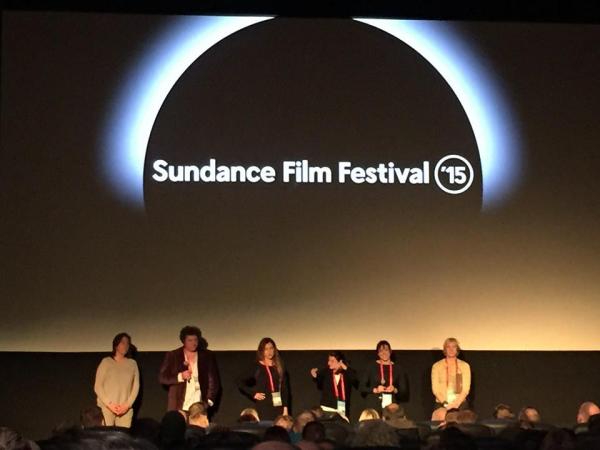By Mona Malacane
You may have read in a recent IDS paper, or on the IU Viewpoints website, or (hopefully) in my December blog post that Bryant Paul co-produced a documentary, Hot Girls Wanted, that follows several young women and their entry into the amateur pornography industry. If you’re one of our faithful readers (thank you if you are!), you know that the film was accepted for the Sundance Film Festival, and this week I caught up with Bryant to talk about his trip and the film’s reception at the prestigious festival.
Sundance is held annually in Park City, Utah, described by Bryant as a “sleepy little ski town, 30 miles south of Salt Lake City.” The festival lasts about nine days and this year it was held from January 22 to February 1. Bryant arrived a few days into the festival, avoiding most of the celebrity hoopla paparazzi frenzy. Unfortunately this meant that he didn’t get to meet actress and producer, Rashida Jones … :(
The documentary aired five times during the film festival in front of audiences ranging from 200 to 500 people. Not surprisingly, Hot Girls Wanted gained popularity early-on and each screening sold out quickly, with many unlucky moviegoers getting turned away. At each screening, the directors took stage to introduce themselves and the film (and to inform the audience of the adult content). After the screening, the directors and producers, including co-producers Bryant and Debby Herbenick of the Kinsey Institute, came on stage to answer questions from the audience and discuss the film.
The film was an eye-opener for many of the viewers, who were, I’m sure, older than the 18-to-20 year old women in the film and grew up without the unfiltered access to media content we have today. “One of the big things that this movie does is, I think it really points out the disconnect between generations and people’s communication environment, such that kids that are growing up now grow up with such a different environment than people who are 40 and over … even 5 years ago, the environment was totally different.”
And that disconnect was apparent when Bryant fielded questions from audience members, who wondered what they could do to prevent the potential negative effects of easy access to mature content. “You’re not going to be able to ban [access to pornography], you’re not going to be able to censor it out of people’s lives. And if you do that for a certain amount of time, eventually kids are going to come across it anyway. If you watch the film, the parents that are depicted in the film … they’re good parents, they seem like nice people who just probably never had a discussion [with their kids] because they don’t even know that this discussion needed to happen, they weren’t aware of what their kids were consuming. They weren’t aware of their media ecology … It’s not something you want to run away from. Not having a conversation is what is going to make it bad. Freaking out when you catch them looking at something is going to potentially create a boomerang effect.”
Audiences at these screenings were also curious whether there was a place for pro-sex, feminist pornography in the world. Bryant responded affirmatively but pointed to a potential
reason why female-oriented pornography was not yet mainstream. “That was kind of interesting because there are two other girls that they followed [in the documentary] that are still doing it and they were happy and well-adjusted and they seemed fine … And my response to that was that I think there is [a place for pro-sex, feminist porn] but it comes down to socializing people.” He went on to explain that porn literacy discussions should be part of sex education and/or ‘the sex talk’ to raise awareness that pornography is a performance and shows behaviors that may not actually feel good (specifically for women) even though they are portrayed that way.
The documentary followed several girls but focused on one more closely, Tressa, who was able to attend a few of the Sundance screenings and answer audience questions. The directors are hoping to bring her and the other women to future film festivals in Miami and Toronto.
Since being released, Hot Girls Wanted has been dubbed one of the top 5 feminist films from Sundance and was bought by Netflix! The Netflix release date will be after it has been shown in theaters, but Bryant is hopeful that the directors will come to IU for a screening and talk this semester.



